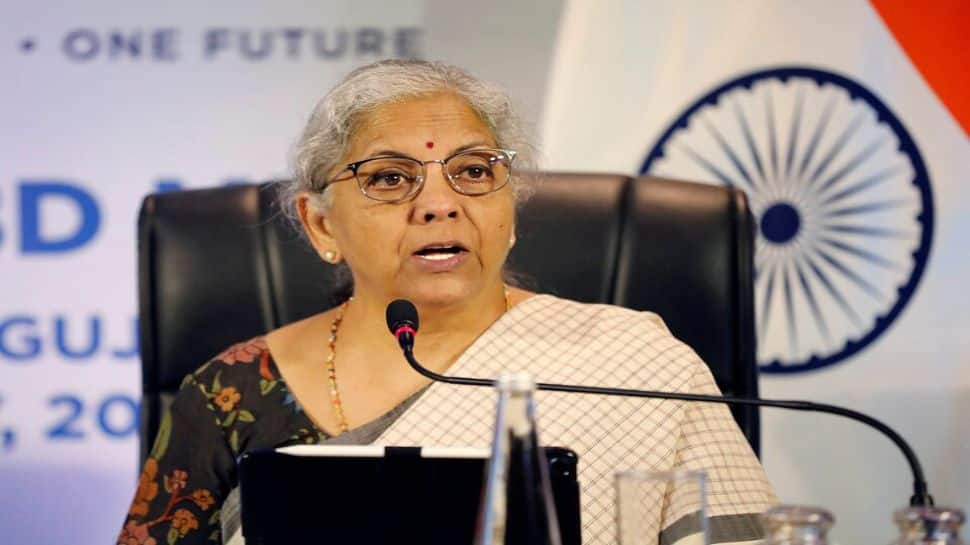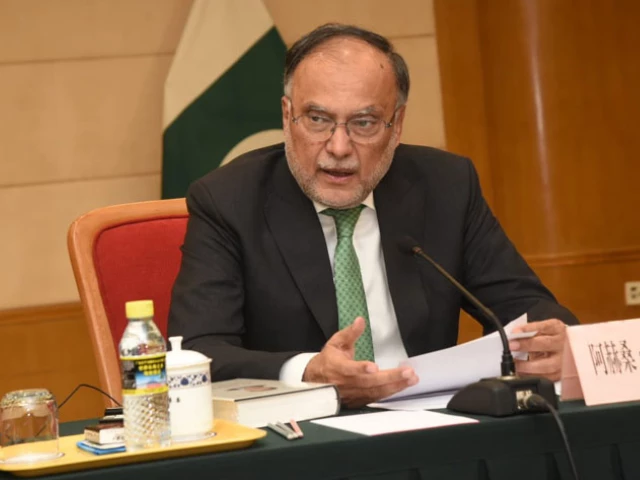Business
Cava, Chipotle and other fast-casual restaurant chains are finally hit by consumer slowdown

Cava stock tumbled 16% in afternoon trading on Wednesday, making it the latest fast-casual chain to feel Wall Street’s wrath after reporting disappointing quarterly sales.
A year ago, eateries like Chipotle Mexican Grill and Cava were reporting double-digit same-store sales growth, even as the broader restaurant industry posted falling traffic and slumping sales. But times have changed. This spring, fast-casual chains saw foot traffic decline as sales slowed down or even shrank.
To explain the downturn, executives have said that diners are “cautious,” in the words of Sweetgreen CEO Jonathan Neman, or dealing with an economic “fog,” according to Cava CFO Tricia Tolivar.
And just as diners are finding reasons why to cut back on their Shake Shack burgers or Chipotle bowls, investors are trimming their fast-casual holdings after rewarding the companies last year for outperforming the rest of the industry. So far in 2025, Shake Shack shares have fallen 16%; Chipotle stock has slid 28%; Cava shares have tumbled 37%; and Sweetgreen stock has plunged 70%. Of the notable publicly traded fast-casual chains, only Wingstop has managed to stay in the green this year, with gains of 20%.
More broadly, investors have grown more cautious about betting on any restaurants, given weak traffic trends and concerns about consumer spending, according to a research note on Sunday from UBS. Even fast-food companies have struggled with the traffic declines and sluggish sales growth, despite their historical reputation as a safer bet during economic uncertainty.
While some fast-casual chains flagged company-specific reasons for their weaker-than-expected results, executives also said that economic uncertainty is weighing on consumers – and hurting their sales.
Generally, fast-casual diners are higher income and more likely to have white-collar jobs. However, Chipotle CEO Scott Boatwright blamed a pullback from low-income consumers for the chain’s same-store sales declines of 4% in the second quarter.
“You have to look no further than what’s going with our competitors with snack occasions or $5 meals. That’s where the consumer is drifting towards, [with] value as a price point, because of low consumer sentiment. I think as sentiment improves, the business will improve. I think that’s probably the biggest headwind we face,” he told analysts on the company’s earnings conference call on June 23.
The University of Michigan’s index of consumer sentiment slid in April to 52.2, one of its lowest-ever recorded readings. It held at that level in May before rising in June to 60.7.
Fast-casual chains are seeing consumers’ economic anxieties in their own research, too.
“Through our regular consumer research, we hear concerns about elevated prices, future job prospects and general anxiety about the future,” Wingstop CEO Michael Skipworth said on the company’s earnings conference call in late July.
The chicken wing chain reported same-store sales declines of 1.9% for the quarter, a dramatic reversal compared to its growth of 28.7% in the year-ago period.
On the company’s earnings conference call on Thursday, Sweetgreen’s Neman said that the chain saw “a more cautious consumer environment starting in April” — coinciding with the drop in consumer sentiment. A “subdued industry backdrop,” particularly in several of the chain’s biggest urban markets, contributed to Sweetgreen’s “really, really rough quarter,” according to Neman.
That’s one reason why the salad chain reported a steeper-than-expected decline in its same-store sales and cut its full-year forecast for the second straight quarter. Sweetgreen executives also attributed the weak quarterly performance to a tough comparison to last year’s steak launch and the transition of its loyalty program.
To improve its value perception among customers, Sweetgreen is increasing its chicken and tofu portions by 25%, improving its chicken and salmon recipes and implementing some promotional pricing, like $13 menu bowl drops for its loyalty program members.
As for Cava, the company had been wowing investors with impressive same-store sales growth since its initial public offering two years ago. But this quarter, the Mediterranean chain reported same-store sales growth of 2.1%, well below Wall Street projections of 6.1%. Executives said that it faced difficult comparisons to the year-ago period’s same-store sales growth of 14.4%, which was fueled by its own steak launch and strong demand at newer restaurant locations that waned this year.
“Cava isn’t so special after all. After blowing out same store sales in Q1 of 10.8%, it fell in line with the industry at 2.1% in Q2. It’s not negative, so that’s helpful,” Tracey Ryniec, stock strategist at Zacks Investment Research, said.
Cava executives also acknowledged that economic concerns are weighing on diners.
“Certainly, we’re operating in a fluid macroeconomic environment and it’s one that sort of creates a fog for consumers where things are changing constantly and it’s hard to see the clear. And during those times, they tend to step off of the gas,” Tolivar said on the company’s conference call on Tuesday evening.
Still, Cava isn’t seeing consumers trade down to cheaper protein options, or experiencing any other deeper business concerns, co-founder and CEO Brett Schulman said. And as it enters the third quarter, its same-store sales have improved, Tolivar said.
And Cava isn’t the only fast-casual eatery anticipating a return to form in the latter half of the year, especially as consumer sentiment improved in June and July.
Chipotle said its traffic started growing again as the burrito chain exited the quarter and continued into July. Sweetgreen has seen “modest” improvement in its same-store sales so far into the third quarter, according to Neman.
And while Wingstop executives said that they’re still seeing weaker consumer demand, the chain is facing easier comparisons to last year’s performance.
Business
South Korea: Online retail giant Coupang hit by massive data leak

Osmond ChiaBusiness reporter
 Getty Images
Getty ImagesSouth Korea’s largest online retailer, Coupang, has apologised for a massive data breach potentially involving nearly 34 million local customer accounts.
The country’s internet authority said that it is investigating the breach and that details from the millions of accounts have likely been exposed.
Coupang is often described as South Korea’s equivalent of Amazon.com. The breach marks the latest in a series of data leaks at major firms in the country, including its telecommunications giant, SK Telecom.
Coupang told the BBC it became aware of the unauthorised access of personal data of about 4,500 customer accounts on 18 November and immediately reported it to the authorities.
But later checks found that some 33.7 million customer accounts – all in South Korea – were likely exposed, said Coupang, adding that the breach is believed to have begun as early as June through a server based overseas.
The exposed data is limited to name, email address, phone number, shipping address and some order histories, Coupang said.
No credit card information or login credentials were leaked. Those details remain securely protected and no action is required from Coupang users at this point, the firm added.
The number of accounts affected by the incident represents more than half of South Korea’s roughly-52 million population.
Coupang, which is founded in South Korea and headquartered in the US, said recently that it had nearly 25 million active users.
Coupang apologised to its customers and warned them to stay alert to scams impersonating the company.
The firm did not give details on who is behind the breach.
South Korean media outlets reported on Sunday that a former Coupang employee from China was suspected of being behind the breach.
The authorities are assessing the scale of the breach as well as whether Coupang had broken any data protection safety rules, South Korea’s Ministry of Science and ICT said in a statement.
“As the breach involves the contact details and addresses of a large number of citizens, the Commission plans to conduct a swift investigation and impose strict sanctions if it finds a violation of the duty to implement safety measures under the Protection Act.”
The incident marks the latest in a series of breaches affecting major South Korean companies this year, despite the country’s reputation for stringent data privacy rules.
SK Telecom, South Korea’s largest mobile operator, was fined nearly $100m (£76m) over a data breach involving more than 20 million subscribers.
In September, Lotte Cards also said the data of nearly three million customers was leaked after a cyber-attack on the credit card firm.
Business
Pakistan’s crisis differs from world | The Express Tribune
1729471601-0/image-(8)1729471601-0-640x480.webp)
Multiple elite clusters capture system as each extracts benefits in different ways
Pakistan’s ruling elite reinforces a blind nationalism, promoting the belief that the country does not need to learn from developed or emerging economies, as this serves their interests. PHOTO: FILE
KARACHI:
Elite capture is hardly a unique Pakistani phenomenon. Across developing economies – from Latin America to Sub-Saharan Africa and parts of South Asia – political and economic systems are often influenced, shaped, or quietly commandeered by narrow interest groups.
However, the latest IMF analysis of Pakistan’s political economy highlights a deeper, more entrenched strain of elite capture; one that is broader in composition, more durable in structure, and more corrosive in its fiscal consequences than what is commonly observed elsewhere. This difference matters because it shapes why repeated reform cycles have failed, why tax bases remain narrow, and why the state repeatedly slips back into crisis despite bailouts, stabilisation efforts, and policy resets.
Globally, elite capture typically operates through predictable channels: regulatory manipulation, favourable credit allocation, public-sector appointments, or preferential access to state contracts. In most emerging economies, these practices tend to be dominated by one or two elite blocs; often oligarchic business families or entrenched political networks.
In contrast, Pakistan’s system is not captured by a single group but by multiple competing elite clusters – military, political dynasties, large landholders, protected industrial lobbies, and urban commercial networks; each extracting benefits in different forms. Instead of acting as a unified oligarchic class, these groups engage in a form of competitive extraction, amplifying inefficiencies and leaving the state structurally weak.
The IMF’s identification of this fragmentation is crucial. Unlike countries where the dominant elite at least maintains a degree of policy coherence, such as Vietnam’s party-led model or Turkiye’s centralised political-business nexus, Pakistan’s fragmentation results in incoherent, stop-start economic governance, with every reform initiative caught in the crossfire of competing privileges.
For example, tax exemptions continue to favour both agricultural landholders and protected sectors despite broad consensus on the inefficiencies they generate. Meanwhile, state-owned enterprises continue to drain the budget due to overlapping political and bureaucratic interests that resist restructuring. These dynamics create a fiscal environment where adjustment becomes politically costly and therefore systematically delayed.
Another distinguishing characteristic is the fiscal footprint of elite capture in Pakistan. While elite influence is global, its measurable impact on Pakistan’s budget is unusually pronounced. Regressive tax structures, preferential energy tariffs, subsidised credit lines for favoured industries, and the persistent shielding of large informal commercial segments combine to erode the state’s revenue base.
The result is dependency on external financing and an inability to build buffers. Where other developing economies have expanded domestic taxation after crises, like Indonesia after the Asian financial crisis, Pakistan’s tax-to-GDP ratio has stagnated or deteriorated, repeatedly offset by politically negotiated exemptions.
Moreover, unlike countries where elite capture operates primarily through economic levers, Pakistan’s structure is intensely politico-establishment in design. This tri-layer configuration creates an institutional rigidity that is difficult to unwind. The civil-military imbalance limits parliamentary oversight of fiscal decisions, political fragmentation obstructs legislative reform, and bureaucratic inertia prevents implementation, even when policies are designed effectively.
In many ways, Pakistan’s challenge is not just elite capture; it is elite entanglement, where power is diffused, yet collectively resistant to change. Given these distinctions, the solutions cannot simply mimic generic reform templates applied in other developing economies. Pakistan requires a sequenced, politically aware reform agenda that aligns incentives rather than assuming an unrealistic national consensus.
First, broadening the tax base must be anchored in institutional credibility rather than coercion. The state has historically attempted forced compliance but has not invested in digitalisation, transparent tax administration, and trusted grievance mechanisms. Countries like Rwanda and Georgia demonstrate that tax reforms succeed only when the system is depersonalised and automated. Pakistan’s current reforms must similarly prioritise structural modernisation over episodic revenue drives.
Second, rationalising subsidies and preferential tariffs requires a political bargain that recognises the diversity of elite interests. Phasing out energy subsidies for specific sectors should be accompanied by productivity-linked support, time-bound transition windows, and export-competitiveness incentives. This shifts the debate from entitlement to performance, making reform politically feasible.
Third, Pakistan must reduce its SOE burden through a dual-track programme: commercial restructuring where feasible and privatisation or liquidation where not. Many countries, including Brazil and Malaysia, have stabilised finances by ring-fencing SOE losses. Pakistan needs a professional, autonomous holding company structure like Singapore’s Temasek to depoliticise SOE governance.
Fourth, politico-establishment reform is essential but must be approached through institutional incentives rather than confrontation. The creation of unified economic decision-making forums with transparent minutes, parliamentary reporting, and performance audits can gradually rebalance power. The goal is not confrontation, but alignment of national economic priorities with institutional roles.
Finally, political stability is the foundational prerequisite. Long-term reform cannot coexist with cyclical political resets. Countries that broke elite capture, such as South Korea in the 1960s or Indonesia in the 2000s, did so through sustained, multi-year policy continuity.
What differentiates Pakistan is not the existence of elite capture but its multi-polar, deeply institutionalised, fiscally destructive form. Yet this does not make reform impossible. It simply means the solutions must reflect the structural specificity of Pakistan’s governance. Undoing entrenched capture requires neither revolutionary rhetoric nor unrealistic expectations but a deliberate recalibration of incentives, institutions, and political alignments. Only through such a pragmatic approach can Pakistan shift from chronic crisis management to genuine economic renewal.
The writer is a financial market enthusiast and is associated with Pakistan’s stocks, commodities and emerging technology
Business
India’s $5 Trillion Economy Push Explained: Why Modi Govt Wants To Merge 12 Banks Into 4 Mega ‘World-Class’ Lending Giants

India’s Public Sector Banks Merger: The Centre is mulling over consolidating public-sector banks, and officials involved in the process say the long-term plan could eventually bring down the number of state-owned lenders from 12 to possibly just 4. The goal is to build a banking system that is large enough in scale, has deeper capital strength and is prepared to meet the credit needs of a fast-growing economy.
The minister explained that bigger banks are better equipped to support large-scale lending and long-term projects. “The country’s economy is moving rapidly toward the $5 trillion mark. The government is active in building bigger banks that can meet rising requirements,” she said.
Why India Wants Larger Banks
Sitharaman recently confirmed that the government and the Reserve Bank of India have already begun detailed conversations on another round of mergers. She said the focus is on creating “world-class” banks that can support India’s expanding industries, rising infrastructure investments and overall credit demand.
She clarified that this is not only about merging institutions. The government and RBI are working on strengthening the entire banking ecosystem so that banks grow naturally and operate in a stable environment.
According to her, the core aim is to build stronger, more efficient and globally competitive banks that can help sustain India’s growth momentum.
At present, the country has a total of 12 public sector banks: the State Bank of India (SBI), the Punjab National Bank (PNB), the Bank of Baroda, the Canara Bank, the Union Bank of India, the Bank of India, the Indian Bank, the Central Bank of India, the Indian Overseas Bank (IOB) and the UCO Bank.
What Happens To Employees After Merger?
Whenever bank mergers are discussed, employees become anxious. A merger does not only combine balance sheets; it also brings together different work cultures, internal systems and employee expectations.
In the 1990s and early 2000s, several mergers caused discomfort among staff, including dissatisfaction over new roles, delayed promotions and uncertainty about reporting structures. Some officers who were promoted before mergers found their seniority diluted afterward, which created further frustration.
The finance minister addressed the concerns, saying that the government and the RBI are working together on the merger plan. She stressed that earlier rounds of consolidation had been successful. She added that the country now needs large, global-quality banks “where every customer issue can be resolved”. The focus, she said, is firmly on building world-class institutions.
‘No Layoffs, No Branch Closures’
She made one point unambiguous: no employee will lose their job due to the upcoming merger phase. She said that mergers are part of a natural process of strengthening banks, and this will not affect job security.
She also assured that no branches will be closed and no bank will be shut down as part of the consolidation exercise.
India last carried out a major consolidation drive in 2019-20, reducing the number of public-sector banks from 21 to 12. That round improved the financial health of many lenders.
With the government preparing for the next phase, the goal is clear. India wants large and reliable banks that can support a rapidly growing economy and meet the needs of a country expanding faster than ever.
-

 Sports7 days ago
Sports7 days agoWATCH: Ronaldo scores spectacular bicycle kick
-

 Entertainment7 days ago
Entertainment7 days agoWelcome to Derry’ episode 5 delivers shocking twist
-

 Politics7 days ago
Politics7 days agoWashington and Kyiv Stress Any Peace Deal Must Fully Respect Ukraine’s Sovereignty
-

 Business1 week ago
Business1 week agoKey economic data and trends that will shape Rachel Reeves’ Budget
-

 Tech5 days ago
Tech5 days agoWake Up—the Best Black Friday Mattress Sales Are Here
-

 Fashion7 days ago
Fashion7 days agoCanada’s Lululemon unveils team Canada kit for Milano Cortina 2026
-

 Politics1 week ago
Politics1 week ago53,000 Sikhs vote in Ottawa Khalistan Referendum amid Carney-Modi trade talks scrutiny
-

 Tech5 days ago
Tech5 days agoThe Alienware Aurora Gaming Desktop Punches Above Its Weight










